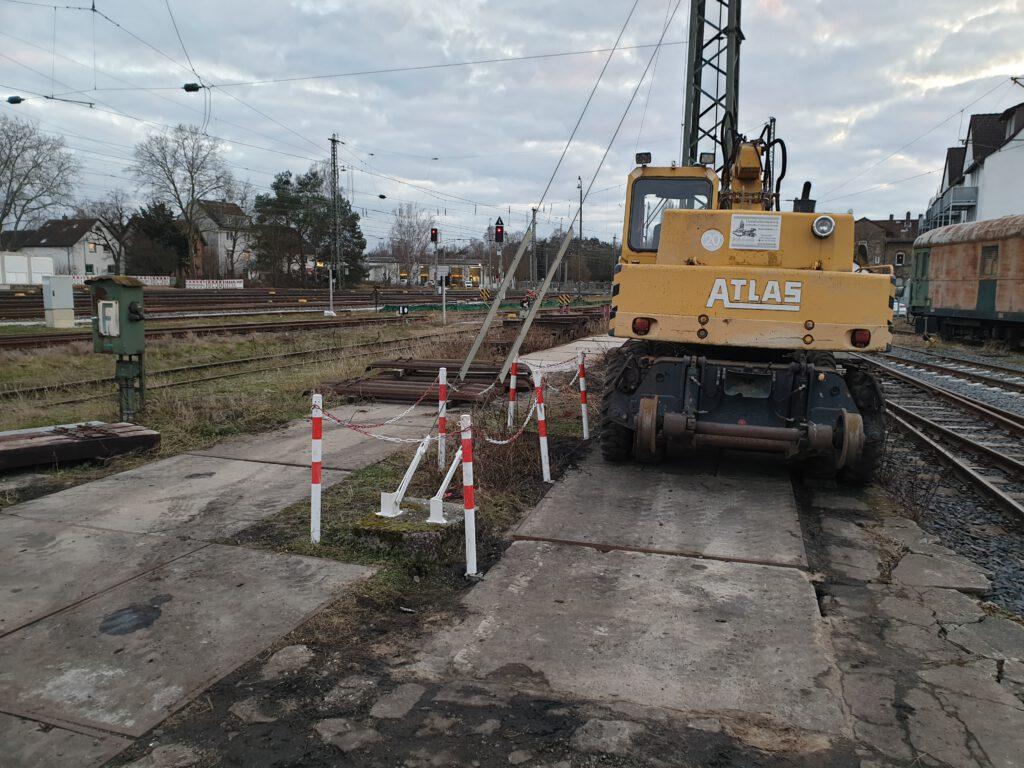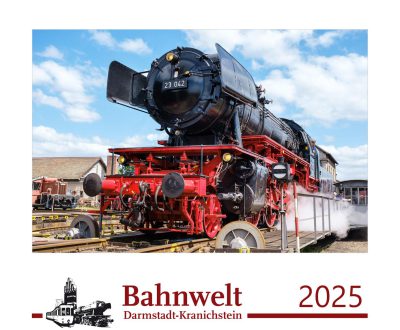Brake inspection on the operational wagons
The winter months are used every year to carry out regular inspections and rectify defects in the company car fleet. This includes “cosmetic” repairs to the interior as well as safety-relevant and legally required functional tests of the brake systems. These are carried out by a technical specialist using a stationary compressor system and a mobile testing device with a driver’s brake valve (similar to that of a locomotive).
Boiler of the 98 727
The riveting work on the boiler of the 98 727 (“Zuckersusi”) is progressing. The rivets around the fire hole have now been fitted.
The railway museum is currently being supported in its work by Steffen Waidelich from Müller & Waidelich GbR. The two operate the steam locomotive “Greif” on the Schlossgartenbahn in Karlsruhe. Thank you very much for your support!
Completion of work on track 22
With a lot of volunteer sweat, perseverance and dedication, track 22 in the core area of the museum was made passable again in the second week of February 2024.
Deteriorating wooden sleepers had made it necessary to take the track out of service. During the dismantling of the track, an inspection pit was also uncovered, which had been marked on plans but had already been filled in during DB times due to a lack of demand. The type and fastening of the longitudinal sleepers under the rail profiles in the pit area were agreed with the preservation authorities, so that the entire dismantling and reinstallation of new concrete sleepers could be carried out in-house using the association’s own track excavator. Only the tamping, lifting and levelling of the track had to be outsourced to an external company. On 6 February 2024, the time had come: the track construction company Krebs from Bingen, which had been commissioned by DB-Netz to install three new points in the station area, was commissioned by the association to carry out the tamping work following this work. In a one-day team operation, the holes for the installation of so-called traversing winches were first cleared with a ballast vacuum cleaner (see video).
The track was then tamped to the required height and longitudinal alignment over a length of 50 metres in two operations. The excess ballast was then removed so that museum employees could begin installing Stelcon© concrete slabs to the side of the track in the following days. Now that the top edge of the rails is level with the adjoining surface, track 22 can once again be used for loading vehicles onto low-loaders. This means that after two years of interruption, around 130 metres of track are once again available for exhibition purposes.
We would like to thank Krebs Gleisbau for their active support with equipment and manpower during the work.
Workshop renovation
The provision of clean, tidy and safe workshop facilities with the necessary machines and tools is essential for the professional maintenance of historic locomotives and carriages. It is also important from a heritage conservation perspective to keep the buildings of the former railway depot with the associated rapid wagon repair workshop in good condition.
And so the workshop of the former Nachrichtenmeisterei (Nm) is currently being extensively renovated. This will soon serve as temporary accommodation for the machines in the old workshop. To this end, the floor slab of the machine hall has been repaired in recent weeks.
One door further on, other rooms in the Nm were first completely gutted. This revealed old decorations on the walls, which were preserved during the subsequent painting work.
New premises for the archive
The collection of the railway museum’s magazine, book and newspaper archive has now reached a size that makes it necessary to move to larger premises. Fortunately, there are still vacant, dry rooms including sanitary facilities for the archive staff in the former signalling depot (Sm).
However, before the archive can move there, these premises must first be renovated. This was started last weekend.
Repairs to the main museum building and removal of vegetation
Weather influences coupled with surface vegetation (moss) unfortunately regularly damage the roof of the main museum building. Necessary repairs were therefore carried out last Saturday. The roof was cleared of moss, checked for cracks and repaired where necessary. This prevented water damage to the exhibitions below. In addition, green pruning was carried out around the building.

Storage area at track 19
The open-air storage area between tracks 19 and 20 on the other side of the coal crane has been completed. A barrier marked in red and white warns the drivers of excavators and forklift trucks of a collision with the guy wire of the catenary mast. Such an event would not only have unpleasant consequences for the functionality of the vehicle, but possibly also for rail traffic in the Rhine-Main region and beyond …

